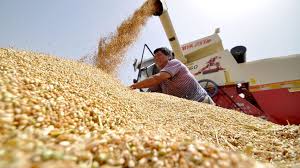A strategy for vaccinating Pakistan

Members of the International Committee of Red Cross applaud the doctors and other staff members of Peshawar’s Lady Reading Hospital | Shahbaz Butt/White Star
A recent survey by the Duke Global Innovation Centre placed Pakistan amongst the bottom three countries in the world in vaccine procurement. By not ordering early, like many other countries did, Pakistan is now struggling to secure supplies in an exceptionally tight global market.
It is also a regional laggard in vaccinations per capita. Comparators Bangladesh and India have fully vaccinated over three percent and five percent of their populations respectively, versus only two percent in Pakistan.
The reasons behind the slow roll-out of the vaccine include an overly risk-averse approach of government functionaries in placing orders — perhaps partly driven by fear of political victimisation via corruption charges in the future; low Covid-19 morbidity and mortality numbers; and an initial reliance on pledges made by GAVI/WHO, which failed to materialise.
Thankfully, in recent weeks, Pakistan has begun ramping up procurement and inoculation with a further 20 million doses expected in July and the daily vaccination rate has touched 500,000 recently.
ADOPTING A SMART STRATEGY
Given the immediate and foreseeable constraints on supplies, Pakistan will have to adopt a smart strategy that maximises effectiveness of vaccine deployment. The strategy must account for the morbidity characteristics of the virus, where the evidence is clear. Over 45s are the main risk cohorts for hospitalisation and death, with risk rising disproportionately with age.
The US, Brazil and India are the top three countries in Covid-19 deaths. Over 95 percent of deaths in the US, 85 percent in Brazil and 88 percent in India are in these age cohorts. In Pakistan 90 percent of deaths are amongst the over 45s. Cases requiring hospitalisation mirror these grim statistics.
This is not to say that young people do not contract the virus or that some do not fall seriously ill, but statistically the risk of serious illness and death is miniscule in the under 45s.
Furthermore, one of the worst hit sectors, with the largest social costs, is education. Students and teachers therefore, must also be prioritised.
A six-point strategy:
- Focus on the over 45s, post-primary students, teachers and healthcare professionals in large cities where disease spread is highest.
Out of a total of around 35 million people over the age of 45, less than 25 million reside in urban areas. Less than 20 million students are in secondary school and above. Teachers and healthcare workers total less than five million. This makes for a total of 50 million key target-age cohorts for vaccination.
At a daily vaccination rate of 750,000 per day, within 100 days, these target-age cohorts can be fully inoculated.
For context: India is averaging over four million inoculations per day, and China 20 million.
At a cost of around 15 dollars per inoculation, the financing required for round one will be less than 750 million dollars. Part of this can be raised through multilateral agencies such as the World Bank, and the remaining by domestic reapportioning. We must not rely on GAVI/WHO donations.
- The acquisition of single-dose vaccine must be maximised and robust diplomatic efforts launched to procure vaccines from around the world. It’s also imperative to ramp up local “fill and finish” capacity, which can boost supplies while lowering costs.
This will require public-private partnerships between the National Institute of Health (NIH), the Drug Regulatory Authority of Pakistan (Drap), the Ministry of Health and local pharmaceutical companies with bottling capacity and expertise.
- Introduce a mass public awareness and marketing campaign across media platforms. It must address vaccine hesitancy and debunk conspiracy theories, especially on social media. Partnerships with social media platforms must be forged to do this.
- The Benazir Income Support Programme/Ehsaas programme and Nadra can be leveraged to make direct cash transfers to target-age cohorts to incentivise vaccination. A payment of 500 rupees will set the government back by less than 25 billion rupees, even if every target-age cohort citizen is paid.
Lucky draw schemes for the vaccinated can also be widely launched to incentivise vaccination.
- Vaccine passports should be made mandatory for local and international travel; utility bills (including cell phones); property and vehicle purchases; examinations; wedding functions, hotels and indoors dining. Heavy fines and blocking of CNICs can be imposed for violations especially on the sellers/organisers of these services.
- Plan and prepare for a vaccine booster programme, given that efficacy is likely to last for up to 12 months for some vaccines.
Some elements of this strategy, the government has already begun to implement and Pakistan has managed the pandemic well thus far by balancing lives and livelihoods, especially when compared to her neighbours. But, as a potential fourth wave starts to develop, we must not tempt fate, and urgently vaccinate, vaccinate, vaccinate.





